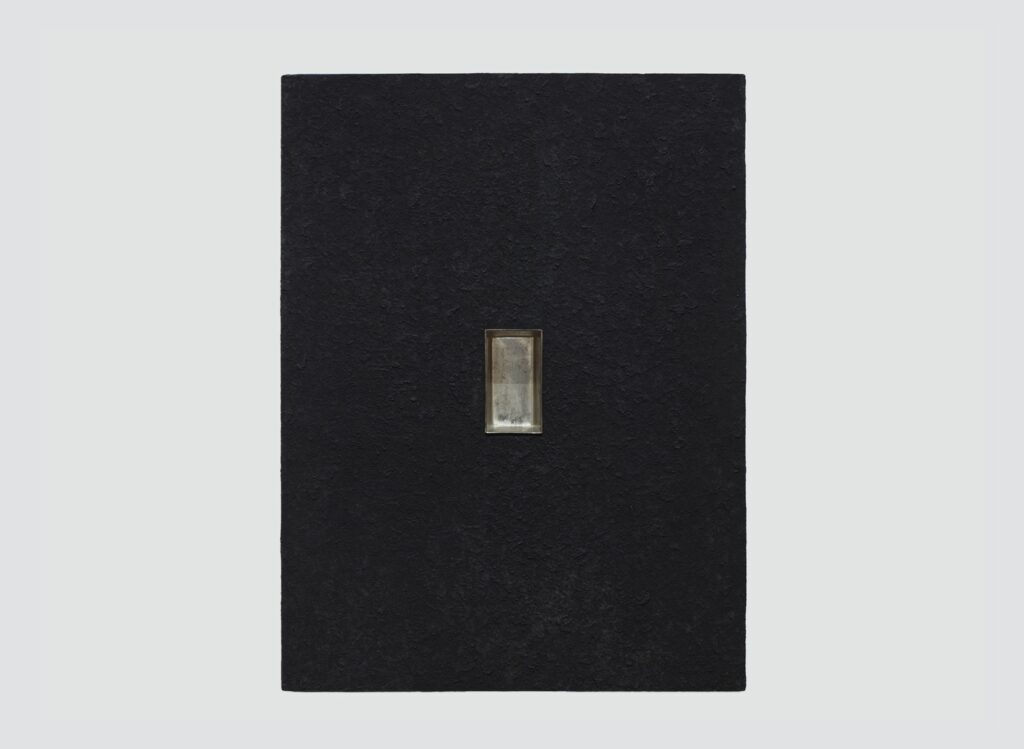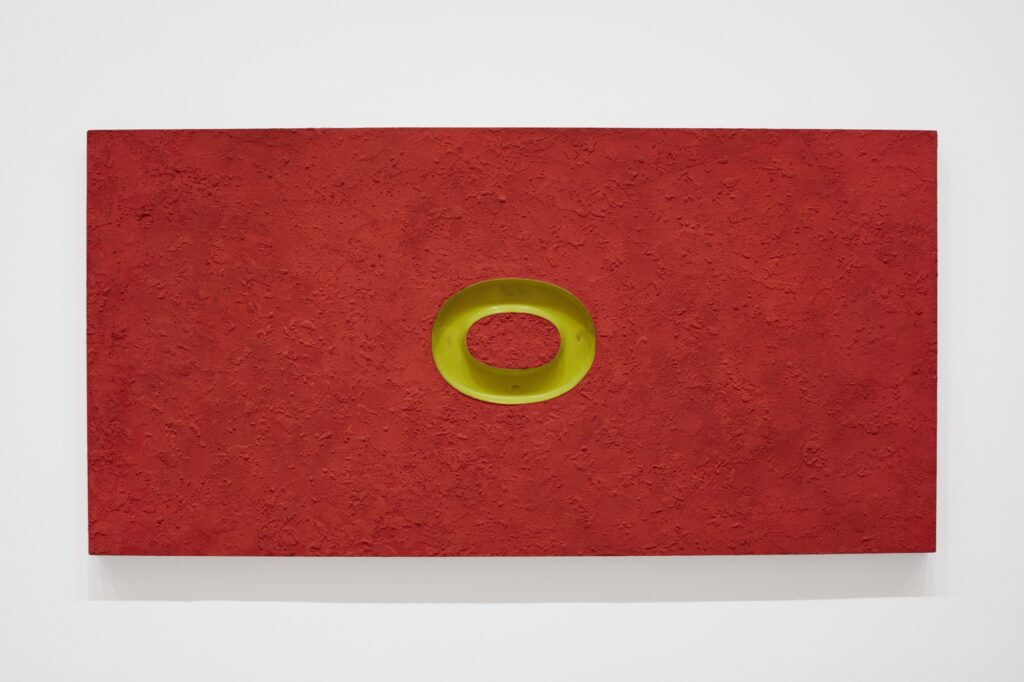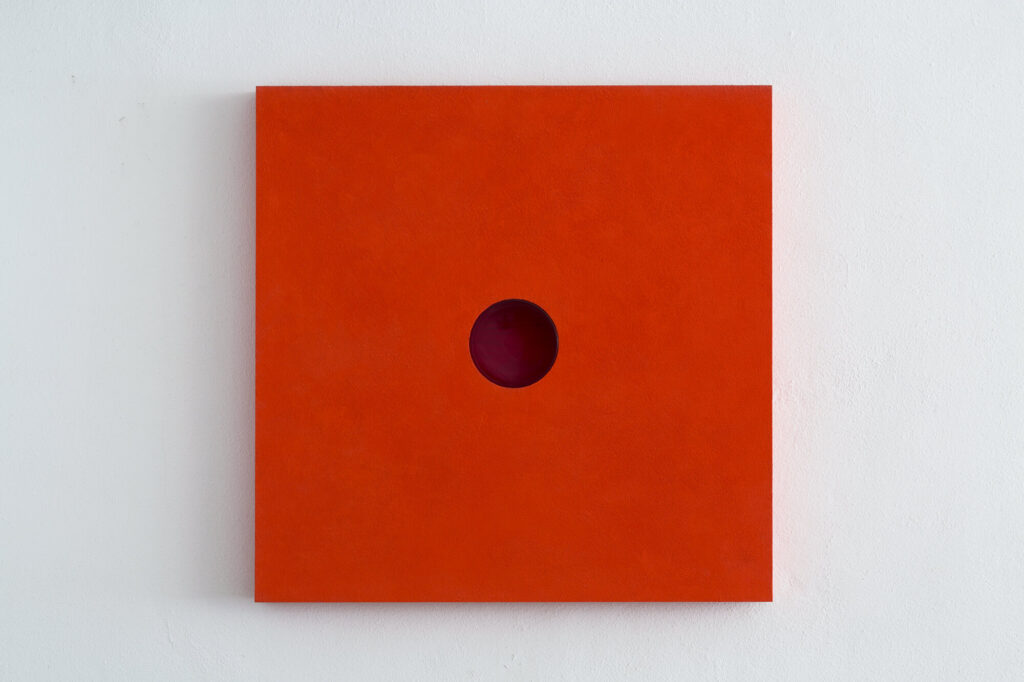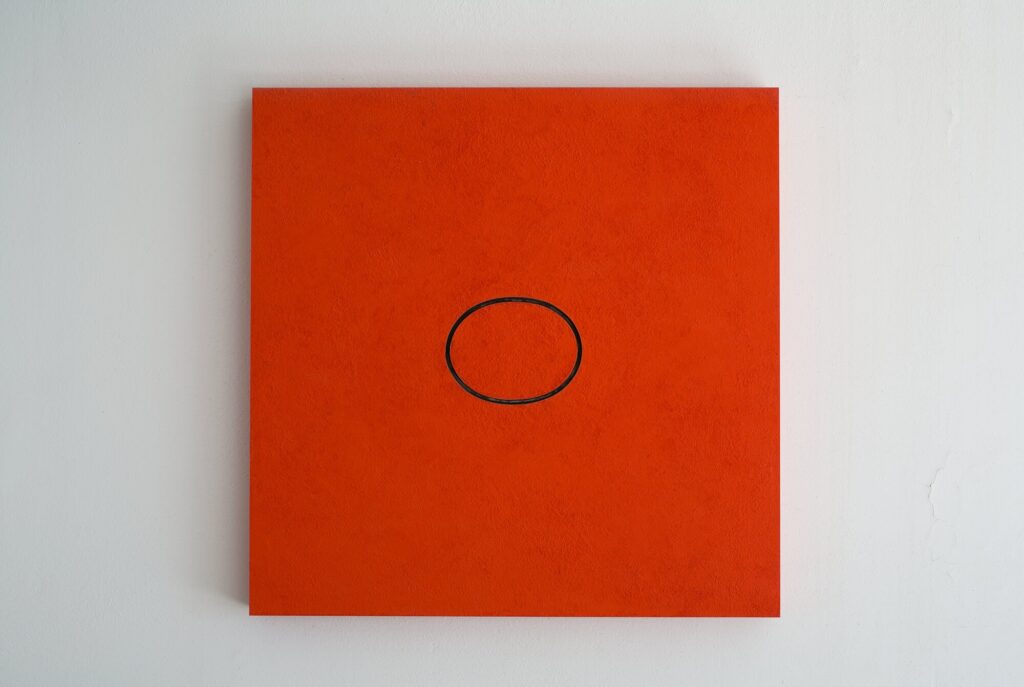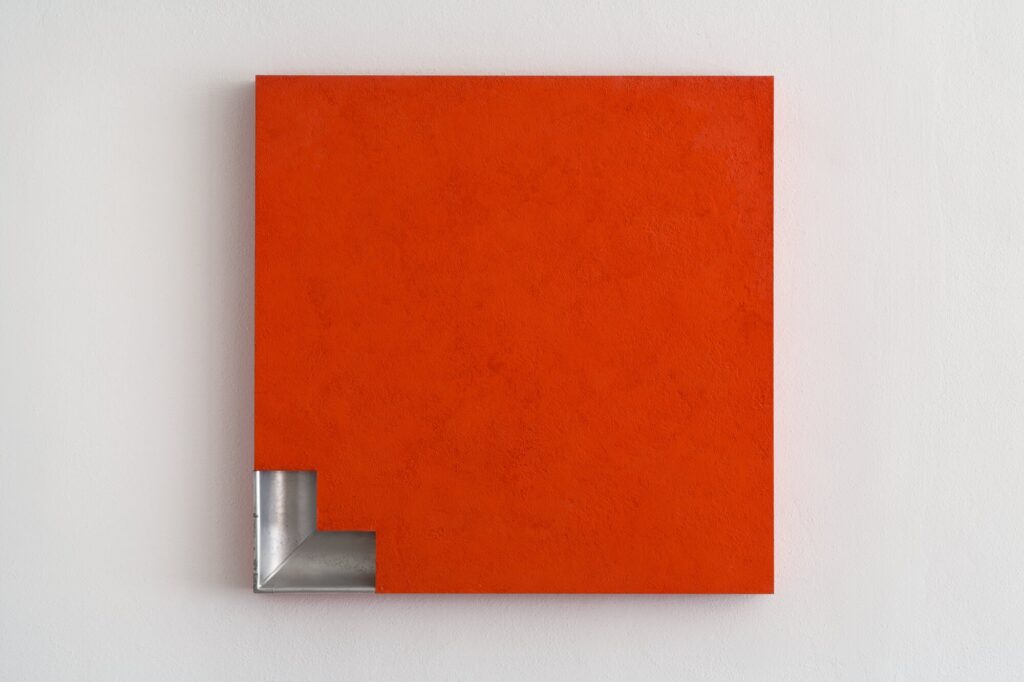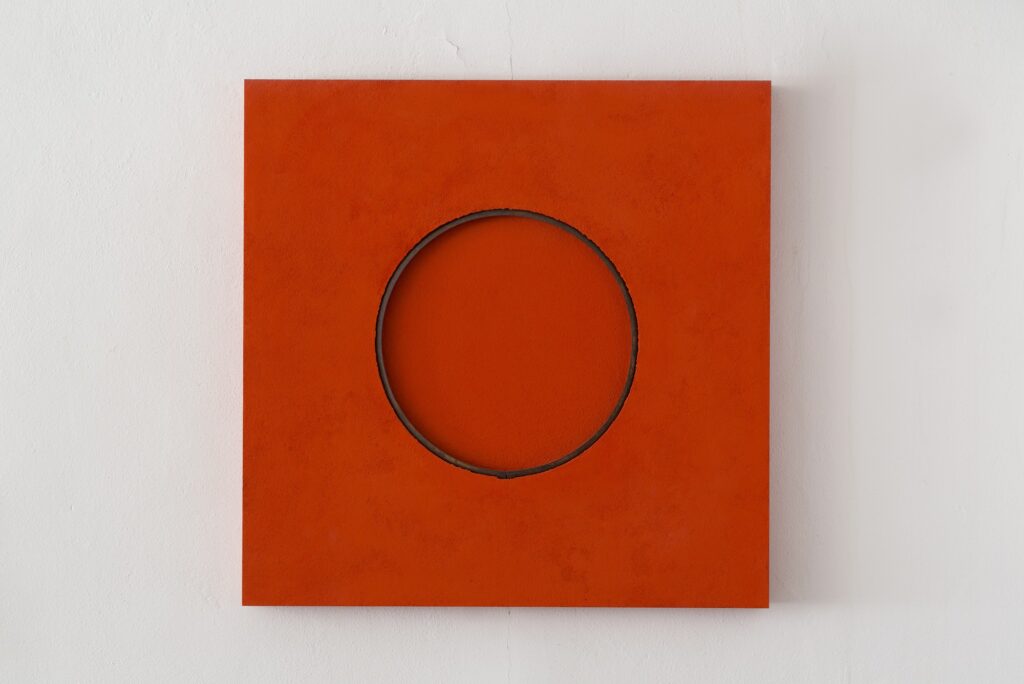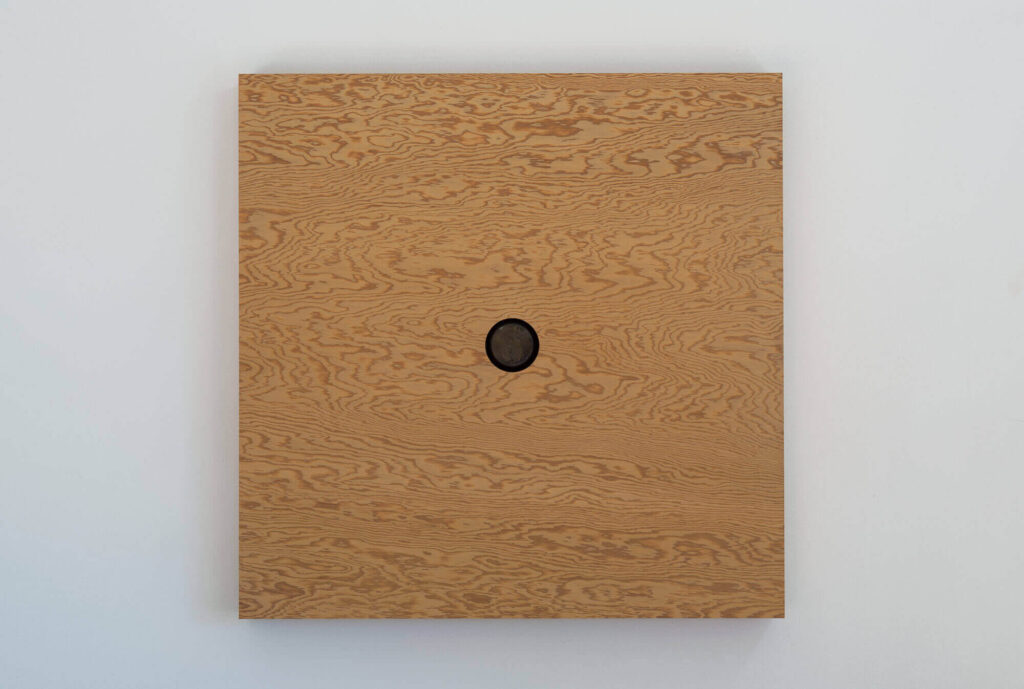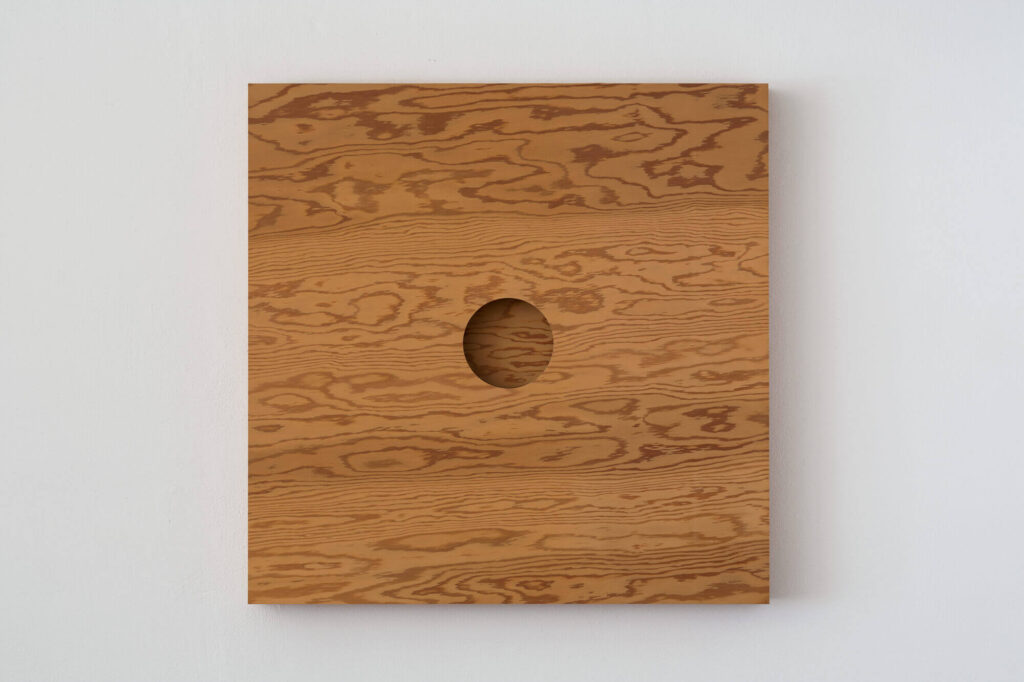By 1961, Donald began to incorporate textural elements mixed with paint, offsetting the flatness of the plane. This body of work can be seen as being transitional to the first reliefs, made the same year and that immediately precede the first fully three-dimensional objects.
Judd refers to a shallow painted relief from 1961 as his first true relief. In this work he applies brown paint mixed with wax and sand to a canvas-covered Masonite surface with thin strips of wood painted red recessed in a manner that divides the front plane into four equal quadrants. This work is followed by another work from 1961 in which Judd places a tin baking pan with its rims flush front and centered on a Masonite surface painted black.
Moving quickly toward three-dimensionality, Judd’s first free-standing work was made in 1962 when he placed a work initially intended as a wall relief onto the studio floor. He would later remark, “I went from low to high relief and then to free-standing works.”
The last group of reliefs were made by Judd between 1989 to 1993, eight of which are permanently installed in his Ranch Office.
